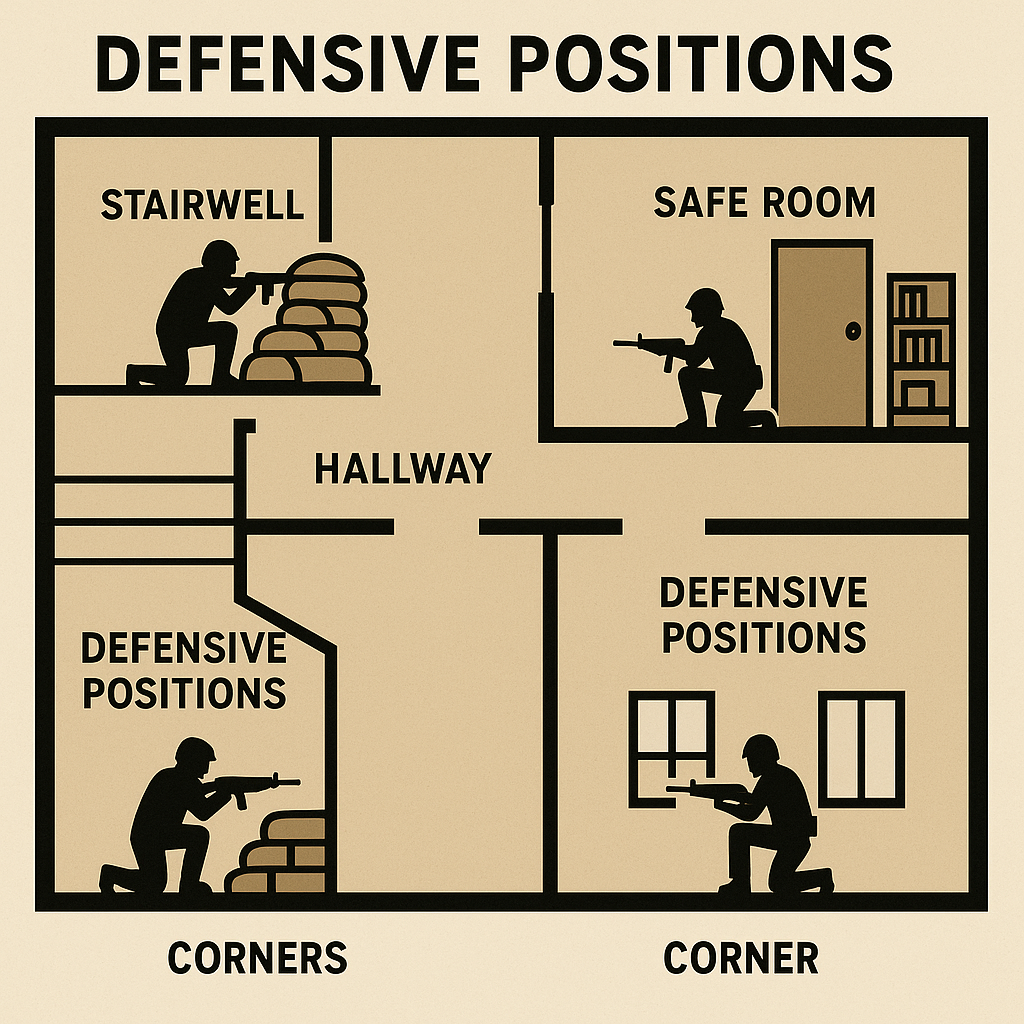When the world turns upside down and law enforcement is no longer a phone call away, your home stops being just a shelter—it becomes your stronghold. As preppers, we plan for food, water, power, and medical needs, but too often security is treated as an afterthought. In a true SHTF situation, a well-prepared defensive strategy inside your house can mean the difference between surviving and becoming another statistic.
Understanding the Threat Environment
Before setting up defensive positions, evaluate the likely threats in your region. Are you more concerned with looters in an urban collapse, desperate travelers in a rural setting, or small organized groups testing neighborhoods? Each scenario changes how you position yourself and where you expect the fight to come from. The golden rule: never assume safety—plan for intrusion.
Layered Defense, Not Just Firepower
Defensive positions don’t begin with sandbags in your hallway. They start outside. Fencing, thorny landscaping, motion lights, dogs, and hardened doors/windows create the first barriers. Inside, however, is where your last stand positions matter most. Think of your house like a castle—layered defenses buy you time and funnel threats where you want them.
Choosing Defensive Positions Indoors
- Hallways
Narrow choke points make hallways ideal for slowing intruders. A defender positioned at the far end can control movement effectively. Keep in mind, though, hallways also limit your escape routes. - Stairwells
A stairwell can serve as a natural choke point. Positioning yourself at the top with cover gives you a serious advantage. However, don’t forget about windows or back stairways that may bypass your position. - “Safe Rooms”
Designating one reinforced room as your fallback defensive position is critical. Ideally, it should have a solid-core door, lock reinforcement, sandbag or bookshelf barriers, first-aid supplies, a radio, and if possible, an alternate exit. This is where you retreat with family while others defend forward. - Windows and Corners
Avoid standing directly in front of windows—they make you a silhouette target. Instead, use offset angles and furniture for concealment. Corners allow you to cover multiple angles but require discipline to avoid exposure.
Creating Cover and Concealment
Drywall won’t stop bullets. Reinforcing positions with sandbags, water barrels, bookcases filled with heavy material, or even concrete pavers hidden inside furniture gives you actual cover, not just concealment. If you have time to prepare before things deteriorate, build defensive points disguised as normal household setups.
Team Roles in a Household Defense
If you’re not alone, assign roles:
- Primary Defenders: Control choke points (hallways, stairs).
- Support: Provide reloads, spotting, communications.
- Family Safety Manager: Keeps children and non-combatants secure in safe rooms.
Training and drills ensure everyone knows where to go and what to do without hesitation.
Silent Communication
Preppers know the importance of radios, but inside a house stealth is key. Hand signals, low-light flashlights, or even simple floor tap codes can silently communicate without giving away your position.
Final Thoughts
Home defense for preppers is about more than owning firearms. It’s about strategy, layers, choke points, fallback positions, and family coordination. Think of your house not as four walls, but as a fortress with multiple levels of security. When the world outside falls apart, your ability to control the inside of your home will determine whether you survive the night.


